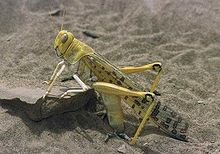Phenylacetonitrile
| Structural formula | ||||||||||||||||
|---|---|---|---|---|---|---|---|---|---|---|---|---|---|---|---|---|

|
||||||||||||||||
| General | ||||||||||||||||
| Surname | Phenylacetonitrile | |||||||||||||||
| other names |
|
|||||||||||||||
| Molecular formula | C 8 H 7 N | |||||||||||||||
| Brief description |
colorless oily liquid with an aromatic odor |
|||||||||||||||
| External identifiers / databases | ||||||||||||||||
|
||||||||||||||||
| properties | ||||||||||||||||
| Molar mass | 117.15 g mol −1 | |||||||||||||||
| Physical state |
liquid |
|||||||||||||||
| density |
1.02 g cm −3 |
|||||||||||||||
| Melting point |
−24 ° C |
|||||||||||||||
| boiling point |
234 ° C |
|||||||||||||||
| Vapor pressure |
0.07 h Pa (20 ° C) |
|||||||||||||||
| solubility |
heavy in water (0.1 g l −1 at 20 ° C) |
|||||||||||||||
| Refractive index |
1.5211 (25 ° C) |
|||||||||||||||
| safety instructions | ||||||||||||||||
|
||||||||||||||||
| Toxicological data | ||||||||||||||||
| As far as possible and customary, SI units are used. Unless otherwise noted, the data given apply to standard conditions . Refractive index: Na-D line , 20 ° C | ||||||||||||||||
Phenylacetonitrile is a colorless (chemically pure, but mostly yellowish) liquid that is present at room temperature and is very toxic chemical compound.
Occurrence in nature
In nature, phenylacetonitrile is found in garden cress. It is contained in the secretion of the desert locust and is used by insects as a fragrance ( pheromone ).
presentation
Phenylacetonitrile 2 can be synthesized by chlorination of toluene 1 to benzyl chloride and subsequent reaction with sodium cyanide in ethanol according to the Kolbe nitrile synthesis.
use
Phenylacetonitrile is used as an intermediate in the chemical industry and as a fragrance . The compound is the starting material for the production of phenylacetic acid .
Individual evidence
- ↑ a b c Entry on phenylacetonitrile. In: Römpp Online . Georg Thieme Verlag, accessed on June 15, 2014.
- ↑ a b c d e f g Entry on phenylacetonitrile in the GESTIS substance database of the IFA , accessed on January 8, 2018(JavaScript required) .
- ↑ David R. Lide (Ed.): CRC Handbook of Chemistry and Physics . 90th edition. (Internet version: 2010), CRC Press / Taylor and Francis, Boca Raton, FL, Physical Constants of Organic Compounds, pp. 3-32.
- ↑ Benzyl cyanide data sheet (PDF) from Merck , accessed on January 28, 2018.
- ↑ Ulrike Knoll: Behavioral research: scent spies . In: Spektrum.de, February 17, 2005, accessed on January 28, 2018.
- ^ S. Hauptmann, J. Gräfe, H. Remane: Textbook of Organic Chemistry, Deutscher Verlag der Grundstoffindustrie Leipzig 1980, p. 378.
- ^ Roger Adams, AF Thal: Benzyl Cyanide In: Organic Syntheses . 2, 1922, p. 9, doi : 10.15227 / orgsyn.002.0009 ; Coll. Vol. 1, 1941, p. 107 ( PDF ).


